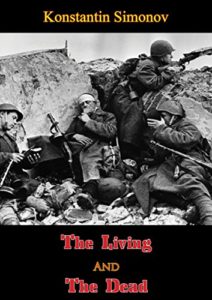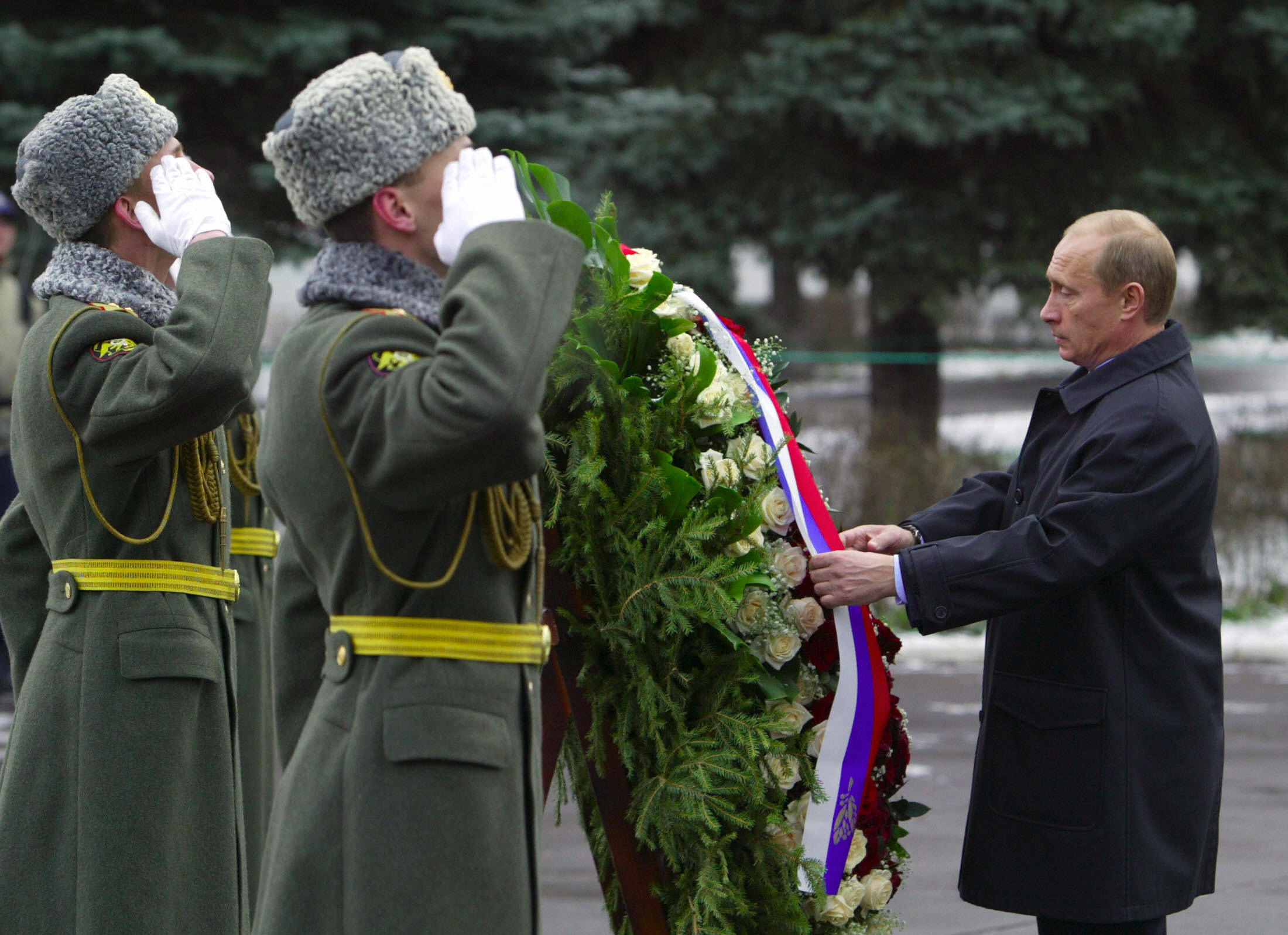The following book was brought to the attention of HistoryNet by Russia’s President Vladimir Putin, then Prime Minister, in a letter to World War II Magazine. In his letter, Mr. Putin expressed his appreciation for our work and recommended the works of several Russian writers to us. Since the subject matter of these books is relevant to Military History magazine, we decided to review the first book Mr. Putin recommended: The Living and the Dead, by Konstantin Simonov, first published in 1959.
 The author Konstantin Simonov (1915-1979) was a World War II Russian war correspondent known for many literary achievements. His 1941 wartime love poem, “Wait For Me,” was very popular among Russian soldiers. In addition to relating his personal experiences, Simonov gathered eyewitness accounts from other soldiers as sources for his book, “The Living and the Dead,” an acclaimed work relating the experiences of men in the Red Army during Germany’s invasion of the Soviet Union, known by its code name Operation Barbarossa.
The author Konstantin Simonov (1915-1979) was a World War II Russian war correspondent known for many literary achievements. His 1941 wartime love poem, “Wait For Me,” was very popular among Russian soldiers. In addition to relating his personal experiences, Simonov gathered eyewitness accounts from other soldiers as sources for his book, “The Living and the Dead,” an acclaimed work relating the experiences of men in the Red Army during Germany’s invasion of the Soviet Union, known by its code name Operation Barbarossa.
The main character Sintsov, who appears to be based on the author, experiences an endless barrage of hardships as he struggles to perform his duties as a war correspondent. Tasked with reporting news from the front to inspire terrorized citizens, Sintsov has many brushes with death and dangerous misunderstandings as he navigates the frontlines.
The book is a candid human document offering Western readers insights into the war on the Eastern Front. It portrays soldiers of the Red Army not as an invincible force, but as a motley group of men who at times feel overwhelmed by the hard tasks that await them. They are often confused and depressed. Russian military forces are disorganized as the enemy wreaks slaughter around them. Officers and men squabble in bureaucratic attempts to keep order. Spies, deserters and saboteurs add to the chaos.
However, the writer emphasized human weakness to outline examples of strength. Although it contains many grim stories, the book pays tribute to unlikely characters who endure courageously despite their sufferings.
One of the most inspiring characters is Brigadier Serpilin, commanding officer of a division, who provides a sublime example of military leadership despite his past hardships as a political prisoner. A most moving scene occurs when Serpilin leads his men on a march through a forest. Watching his strong, brisk stride, the men are moved by his bravery, yet do not know that he is secretly suffering:
“Serpilin did not find it easy to keep an even pace; he was no longer young, life had not spared him…But he knew that a commander’s behavior was of the utmost importance to the morale of men who knew that they were surrounded by enemy troops. Everything about his behavior was important, because each of his movements and gestures was bound to be noticed and interpreted by his men,” the author wrote.
Describing Sintsov’s conflicted choice to remain close to the frontlines rather than remove himself from immediate danger, the author expressed “sometimes the greatest proof a man can give of his strength is to go through with a decision whose consequences he dreads.”
To fully appreciate these sentiments, one must view the book in context. From the perspective of Nazi Germany, the war in Russia was a Vernichtungskrieg—literally, a “war of annihilation.” This was not only due to political differences. Racial discrimination was a central force behind the Nazi extermination policy. Anti-Slavic sentiment was common in German-speaking countries for many years.
As early as the 1920s, German nationalist groups caricatured Russians as “racially inferior” and inhuman; historical evidence of this can be seen today at many German institutions including the Munich Municipal Museum and the Bavarian Police Museum.
The German general Erich Hoepner, a military leader of Operation Barbarossa, wrote in May 1941: “The war with Russia is a vital part of the German people’s fight for existence. It is the old fight of German against Slav…This war must have as its goal the destruction of today’s Russia and therefore must be conducted with unprecedented harshness. Every battle engagement must, in its planning and conduct, be led by the iron will to mercilessly and totally annihilate the enemy.”
Nazi leaders including Heinrich Himmler and Nazi state propaganda touted that Germans and Russians could not coexist for racial reasons. German troops were ordered to starve and kill Russians indiscriminately.
Simonov recorded instances of brutality, which have, in many cases, been lost to history—for example, Nazis forcing Russian women to clear mines with their bare hands. He also described unarmed prisoners shot on sight by the Germans. “Some tried to run away and were shot in the back; some raised their arms and were shot in the face,” he wrote.
However, the core merit of Simonov’s work is that he captured the feelings and experiences of people fighting back in the face of extinction.
For example, he described the attitude of a Russian soldier who had lost all his family members: “He was the embodiment of war, and so long as the war continued there was no place in his soul, after his family’s death, for anything else but the war and all that was directly concerned with the business of war.”
In another scene, he expressed the doubts of a man wondering if German troops would overrun an ancient village cemetery: “His heart was wrung by a sharp and painful feeling of sorrow for his native land, which, behind him in the west, was already being trampled upon by German jackboots—jackboots which by tomorrow might be treading the very bit of his native soil at which he now gazed.”
Although the book does not shy away from describing death and darkness, it is not a work of fatalism. It reflects the willpower of human beings to dare and to hope in the face of sheer hopelessness. The author expressed similar sentiments in a 1941 poem, Smolenschina, addressed to his war buddy Alexei Surkov:
“Alyosha, till now we’ve been spared by the bullets.
But when (for the third time) my life seemed to end,
I yet still felt proud of the dearest of countries,
The great bitter land I was born to defend.”
Simonov’s narrative is permeated with a desperate longing for survival and above all, a stubborn determination not to yield. While it is not focused on military strategy, it provides an enduring witness to human experiences. Anyone wishing to learn more about World War II from a Russian point-of-view would benefit from reading it.

